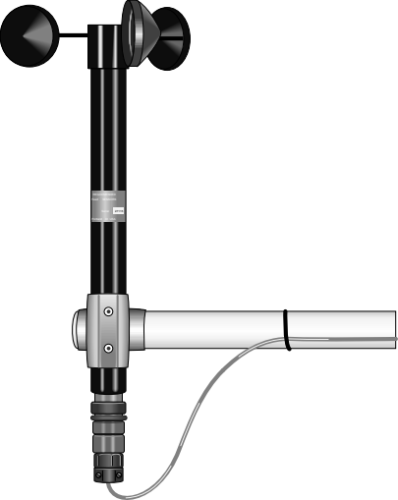The Function of an Anemometer in Improving Security for Outdoor Activities
The Function of an Anemometer in Improving Security for Outdoor Activities
Blog Article
Exploring the Functions and Advantages of Anemometers for Climate Enthusiasts and Specialists
From mug anemometers to sonic anemometers, each type brings its special collection of benefits and applications, dropping light on numerous elements of atmospheric problems. As we dig right into the features and benefits of anemometers, a much deeper understanding arises not just of prevailing climate sensations yet additionally of the more comprehensive ramifications for sectors like wind energy manufacturing and ecological study.
Importance of Anemometers in Weather Condition Surveillance
Anemometers play a vital role in weather tracking by giving exact measurements of wind rate, assisting in projecting and understanding climate patterns. These instruments, ranging from conventional cup anemometers to modern ultrasonic anemometers, are necessary for meteorologists, scientists, and climate fanatics alike.

Kinds of Anemometers and Their Applications
The most common kinds of anemometers include mug anemometers, vane anemometers, hot-wire anemometers, and ultrasonic anemometers. Cup anemometers consist of three or four cups installed on horizontal arms that revolve with the wind, gauging its speed. Vane anemometers, on the other hand, use a freely turning vane to line up with the wind direction, giving both wind rate and direction dimensions.
Each kind of anemometer has its distinct advantages and applications. Cup anemometers are robust and ideal for general climate tracking, while vane anemometers are preferred for directional measurements. Hot-wire anemometers are delicate to reduced air velocities, making them suitable for indoor settings. Ultrasonic anemometers are non-intrusive and supply high accuracy, frequently made use of in research and specialized weather condition surveillance applications. Understanding the features and applications of each sort of anemometer is important for choosing one of the most appropriate tool for details weather condition monitoring requirements.
Advantages of Making Use Of Anemometers in Projecting
In meteorology, the usage of anemometers uses vital advantages for boosting the precision of weather condition projecting. Anemometers measure wind rate and instructions, providing crucial data for forecasting weather condition patterns. By incorporating wind information right into forecasting models, meteorologists can much better understand the motion of climate systems, prepare for changes in atmospheric problems, and problem much more exact forecasts.
Additionally, anemometers play an important function in analyzing prospective climate dangers. Monitoring wind rates assists forecasters predict extreme climate events such as typhoons, hurricanes, and wintertime tornados with better precision. This early caution system allows authorities to issue timely informs and apply essential precaution, decreasing the dangers to life and residential property.
Furthermore, anemometers assist in optimizing eco-friendly power manufacturing. By analyzing wind patterns, meteorologists can identify appropriate locations for wind farms and predict power result, adding to the effective generation of link wind power.

Anemometers in Wind Energy Production
Provided the important role anemometers play in giving exact wind information for climate forecasting and risk evaluation, their importance extends to the realm of wind power production. Anemometers are important tools in the area of wind power, where the dimension of wind speed and direction is crucial for identifying the usefulness and effectiveness of wind turbine setups. By properly determining wind rates at varying elevations, anemometers assist maximize the positioning and style of wind turbines to make the most of power result.
In wind farms, anemometers are tactically put to collect real-time wind data that is utilized to assess the possible energy manufacturing of a website. This information contributes in figuring out the financial stability of wind energy tasks and in forecasting energy generation to ensure grid stability. In addition, anemometers help in checking wind problems to maximize generator performance, avoid damages from high winds, and make sure the security of employees find more information operating in the area of wind turbines.
Enhancing Climate Recognizing With Anemometers

Anemometers play a key role in improving our understanding of microclimates. These localized climate condition can vary dramatically from more comprehensive regional projections, making it crucial to have accurate information for details locations. anemometer. By strategically positioning anemometers in various locations, researchers can collect detailed details on just how wind acts in different surfaces, urban environments, or bodies of water
In addition, anemometers contribute to improving climate projecting models by offering real-time data on wind habits. This details is specifically beneficial for anticipating serious weather condition events, enhancing farming practices, and supporting sectors like aeronautics and maritime navigating. Generally, anemometers are important tools that allow us to dive much deeper into the intricacies of climate systems, ultimately causing even more better-informed decisions and precise forecasts.
Conclusion
In final thought, anemometers play a vital duty in climate surveillance and forecasting by determining wind speed and direction. They are vital devices used by weather condition fanatics and experts to collect exact data for forecasting weather condition patterns and analyzing prospective impacts. Anemometers additionally have applications in wind energy production, further highlighting their relevance in both weather forecasting and sustainable energy fields. On the whole, anemometers add to enhancing our understanding of weather condition phenomena and boosting forecasting abilities. anemometer.
From mug anemometers to sonic anemometers, each type brings its unique set of applications and benefits, losing light on various aspects of climatic conditions. These tools, varying from traditional mug anemometers to contemporary ultrasonic anemometers, are necessary for meteorologists, researchers, and weather fanatics alike. The most usual kinds of anemometers consist of mug anemometers, vane anemometers, hot-wire anemometers, and ultrasonic anemometers. Cup anemometers are appropriate and durable for basic climate monitoring, while vane anemometers are preferred for directional dimensions. Anemometers are essential tools in the area of wind energy, where the dimension of wind rate next page and instructions is crucial for figuring out the usefulness and performance of wind turbine installments.
Report this page